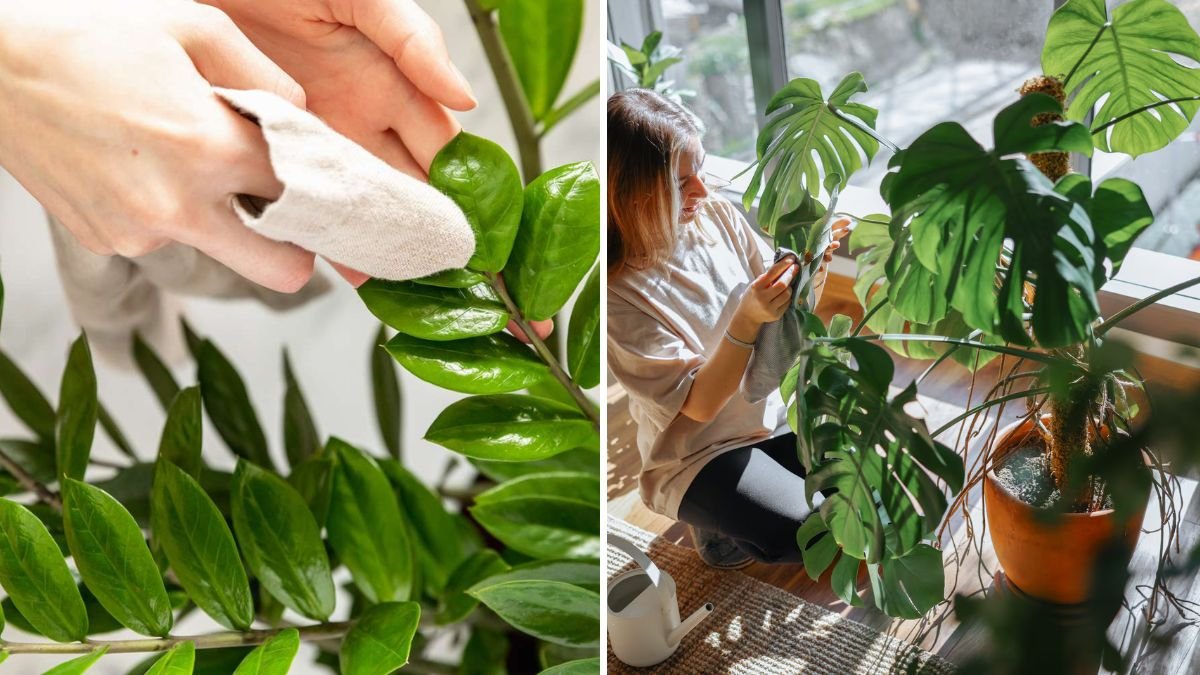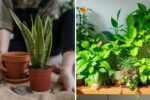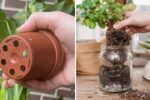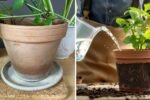Indoor plants add beauty, freshness, and a calming vibe to our homes. Their vibrant green leaves and unique textures instantly brighten up any space. But what happens when you notice a mysterious sticky residue coating the leaves of your beloved plants? It’s an unpleasant surprise that often leaves plant lovers wondering what went wrong.
Sticky leaves are not just a cosmetic issue—they can signal underlying problems like pest infestations, over-fertilization, or even natural plant secretions. Ignoring the sticky film can lead to poor plant health, mold growth, and stunted growth over time.
In this detailed guide, let’s explore seven common reasons indoor plants develop sticky residue on leaves, how to identify the cause, and practical ways to fix and prevent it.
1. Sap-Sucking Pests (The Most Common Culprit)
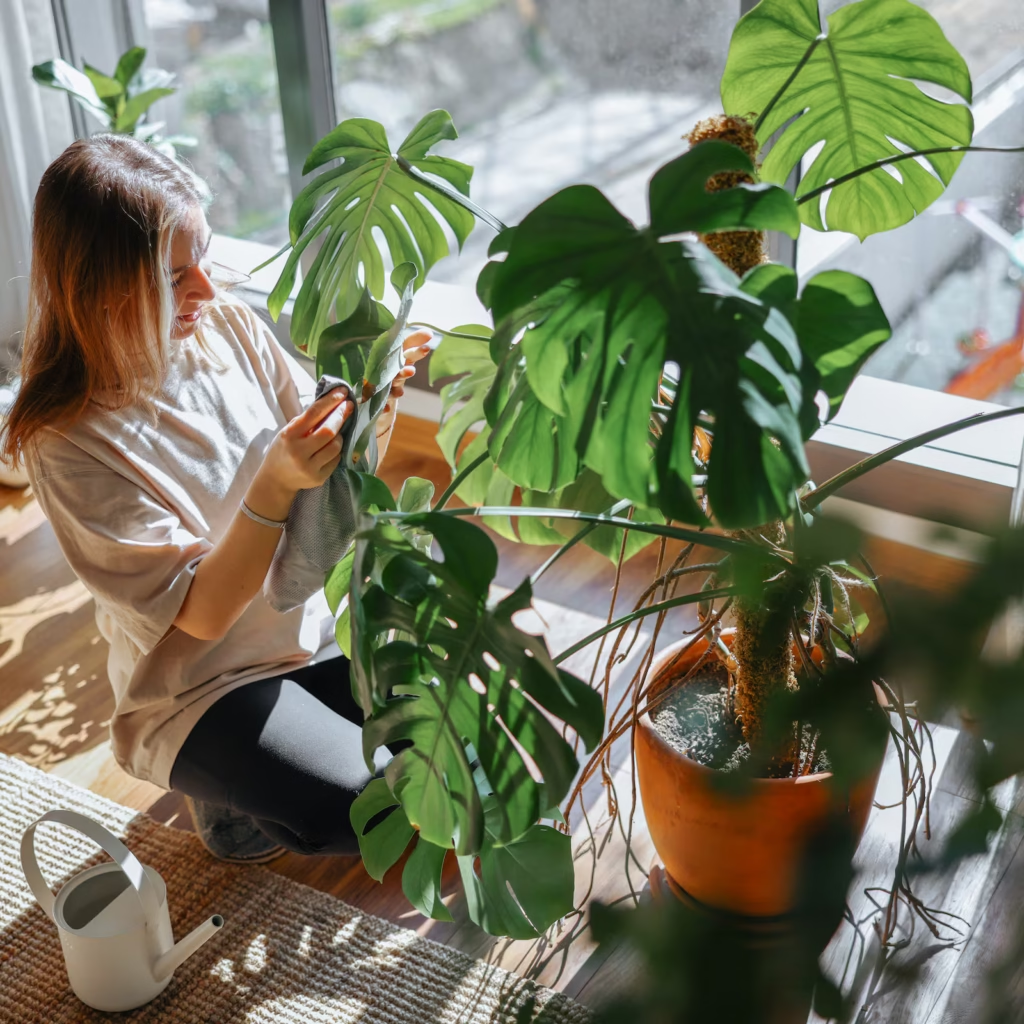
The number one reason for sticky leaves is a pest infestation, especially from aphids, mealybugs, whiteflies, or scale insects. These tiny sap-sucking insects feed on the plant’s nutrient-rich juices and excrete a sugary liquid known as honeydew—the sticky substance you see on leaves and stems.
How to Identify Pest Activity:
- You may notice tiny white, brown, or black insects on the undersides of leaves or along stems.
- The leaves feel tacky or sticky, sometimes with a shiny sheen.
- Over time, black sooty mold may grow on top of the honeydew, giving the leaves a dirty appearance.
- Leaves may turn yellow, curl, or fall prematurely.
How to Fix It:
- Isolate the affected plant to prevent pests from spreading.
- Wipe leaves with a soft cloth dipped in a mild soap-and-water solution (1 teaspoon of liquid dish soap in 1 liter of water).
- Rinse thoroughly to remove the soap residue.
- Spray with neem oil, insecticidal soap, or horticultural oil weekly until the infestation clears.
- For heavy infestations, consider pruning severely affected parts or using systemic plant-safe insecticides.
Keeping your plants pest-free is the best way to stop sticky honeydew buildup and protect your indoor greenery from further harm.
2. Over-Fertilization and Salt Buildup
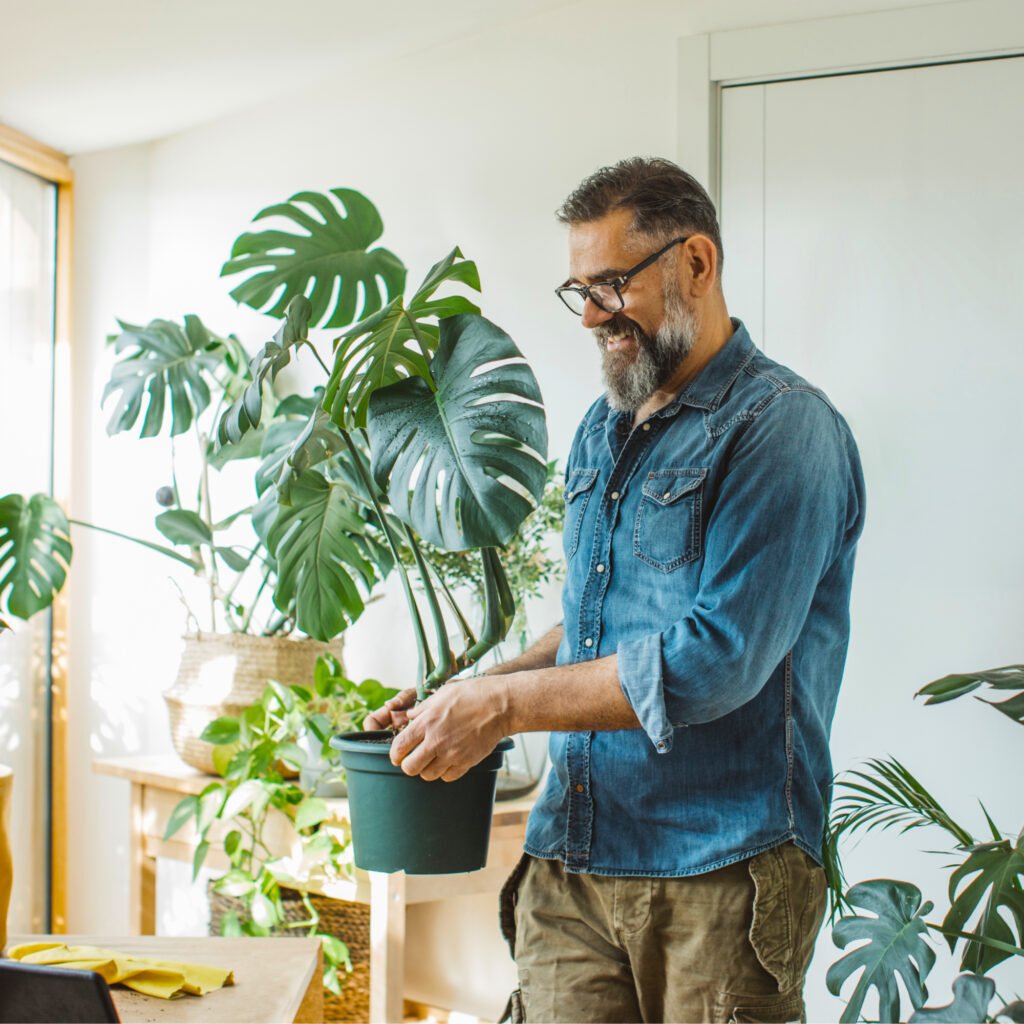
Another frequent cause of sticky residue is excess fertilizer use. When plants are overfed, especially with chemical fertilizers, unused nutrients accumulate in the soil. This buildup draws water out of the plant cells, causing them to secrete a sticky or syrupy sap as a stress response.
Signs of Over-Fertilization:
- Sticky residue around the base of stems or leaf edges.
- White, crusty salt deposits on the soil surface.
- Leaf tips turning brown or burnt-looking.
- Slowed growth despite frequent feeding.
How to Fix It:
- Flush the soil: Water the plant thoroughly until water drains out the bottom to wash away excess salts. Repeat monthly if needed.
- Hold off on feeding: Pause fertilization for at least 4–6 weeks.
- Repot if necessary: If the soil is too compacted or crusted with salts, replace it with fresh potting mix.
- In the future, dilute fertilizer to half the recommended strength and feed only during the active growing season (spring and summer).
Balanced nutrition encourages healthy growth and prevents chemical stress that can trigger sticky leaf excretions.
3. Natural Nectar or Plant Secretions
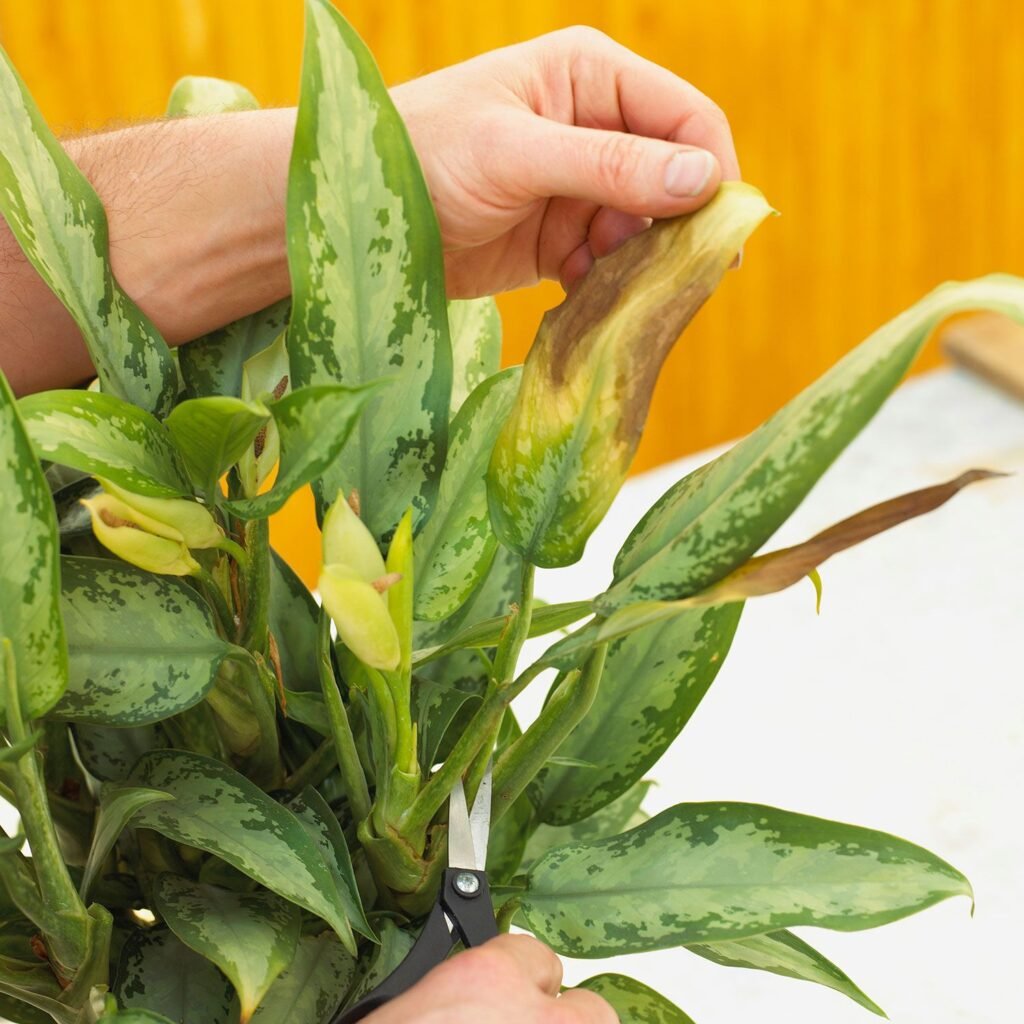
Interestingly, not all sticky substances are bad. Some plants naturally produce nectar or sap as part of their normal biological processes.
For example:
- Ficus, Schefflera, and Dracaena species sometimes excrete small droplets of sap from leaf edges.
- Flowering houseplants like Hoya or Orchid may release sticky nectar near blooms to attract pollinators (in nature).
How to Identify Natural Secretions:
- The sticky residue is clear and sweet-smelling, without mold or pest presence.
- The plant otherwise looks healthy with vibrant leaves and steady growth.
- There are no visible insects on or under the leaves.
How to Manage It:
- Simply wipe the leaves gently with a damp microfiber cloth to remove the residue.
- Maintain good air circulation to prevent dust and mold buildup on sticky surfaces.
This type of stickiness is harmless and actually indicates a well-hydrated, actively growing plant.
4. Poor Air Circulation and Dust Accumulation
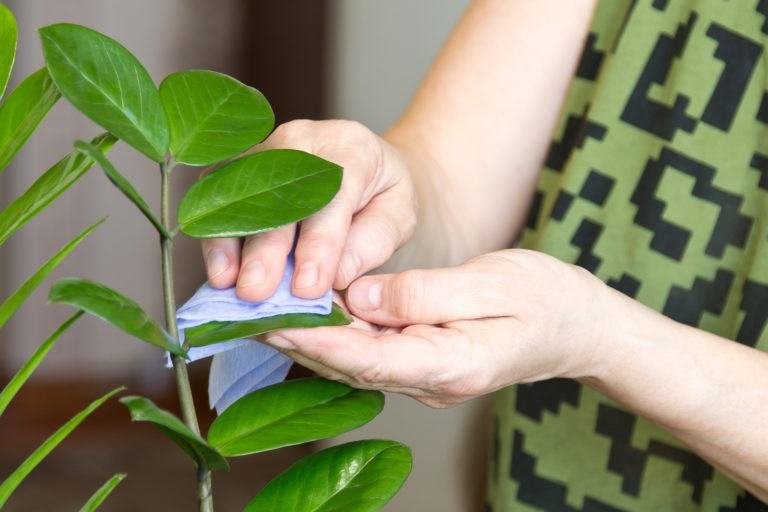
Stagnant indoor air combined with dust buildup can trap moisture, making leaves feel tacky or grimy. While the residue may not be sticky sap, it often feels sticky to touch due to a mix of dust, humidity, and natural plant oils.
Signs and Symptoms:
- Dusty leaves with a light sticky film.
- Slower photosynthesis—leaves appear dull or lose their shine.
- Increased susceptibility to pests and fungal infections.
How to Fix It:
- Wipe leaves regularly: Clean with a damp cloth or spray them lightly with lukewarm water.
- Increase air circulation: Use a small fan to keep air moving around plants.
- Avoid overcrowding: Give each plant breathing space to reduce humidity buildup around leaves.
Clean, well-ventilated environments prevent sticky surfaces and allow plants to breathe and photosynthesize effectively.
5. Honeydew from Neighboring Infested Plants
Even if your plant looks pest-free, it might still develop sticky residue from honeydew falling from nearby infested plants. Sap-sucking pests on a hanging or taller plant above can drip honeydew onto lower foliage, making it seem like your plant is affected.
How to Identify the Source:
- Check nearby plants, especially hanging ones or those positioned above the affected area.
- Look for signs of insects, mold, or sticky buildup on surrounding surfaces.
How to Fix It:
- Treat all nearby plants—not just the visibly affected ones—to eliminate the true source of honeydew.
- Clean walls, pots, and shelves to remove residual stickiness that can attract ants or mold.
- Improve spacing: Rearrange your plant layout to ensure better separation between specimens.
A clean growing area and proactive pest management across all plants help stop sticky residue from spreading indirectly.
6. Excessive Humidity and Fungal Growth
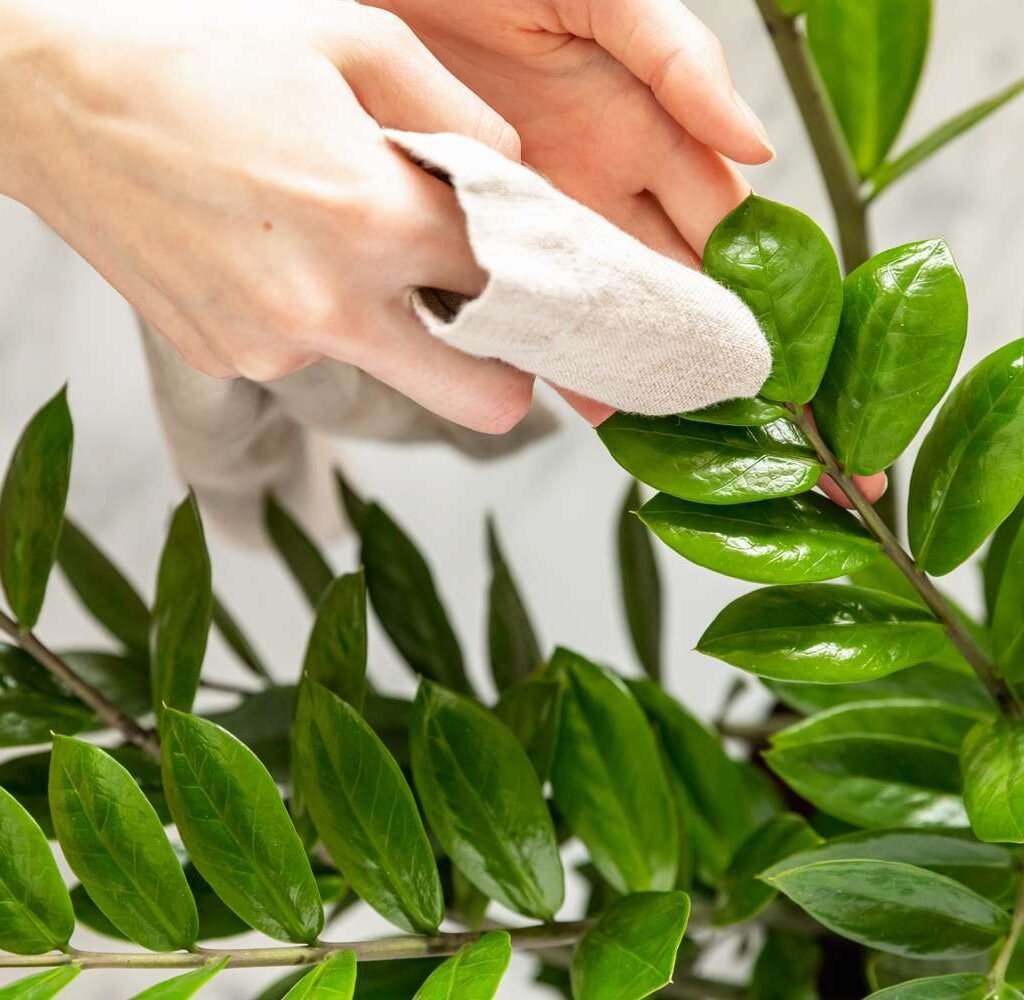
High indoor humidity, while beneficial for tropical plants, can sometimes create conditions for fungal infections that lead to sticky or slimy leaf surfaces. Some fungal pathogens secrete a sticky substance as they feed on plant tissue, leaving behind a thin residue.
Signs of Fungal Issues:
- Sticky, slightly slimy texture on leaves.
- Faint white or gray fungal coating (powdery mildew or mold).
- Yellow or brown spots spreading across foliage.
- Musty odor around the plant.
How to Fix It:
- Improve ventilation: Place a fan nearby or open windows occasionally.
- Avoid overwatering: Keep soil moist, not soggy.
- Trim affected leaves and dispose of them properly (don’t compost).
- Apply a fungicide or natural antifungal spray (like diluted neem oil).
Balanced humidity (around 50–60%) keeps your plants hydrated without encouraging fungal growth or sticky mold buildup.
7. Environmental Stress and Temperature Fluctuations
Sudden changes in temperature, drafts, or direct exposure to air conditioners and heaters can stress plants, causing them to release sap as a defense mechanism. The result can be a thin, sticky coating on the leaves or stems.
Stress Indicators:
- Sticky residue with no visible pests or mold.
- Leaf edges browning or curling.
- Wilting or drooping after exposure to cold or hot air.
How to Fix It:
- Maintain consistent temperatures: Most indoor plants prefer 18–25°C (65–77°F).
- Avoid placing plants near air vents or heaters.
- Gradually acclimate plants to new environments instead of sudden moves from one room to another.
By stabilizing your indoor climate, you prevent stress-related sap excretion and keep your plants’ natural systems in balance.
Bonus Tip: Regular Cleaning Prevents Sticky Build-Up
Whether caused by pests, fertilizer, or natural secretions, regular cleaning can prevent sticky buildup from damaging your plants.
How to Clean Sticky Leaves:
- Mix a gentle cleaning solution: 1 teaspoon of mild dish soap in 1 liter of lukewarm water.
- Dip a soft microfiber cloth or sponge in the mixture.
- Wipe each leaf carefully, including the undersides.
- Rinse with clean water to remove residue and soap traces.
- Let the plant air-dry in a shaded area.
Doing this once a month keeps your plant leaves healthy, shiny, and free from pests or debris.
Conclusion
Sticky residue on indoor plant leaves is a common yet fixable issue. The key lies in identifying the underlying cause—whether it’s pest honeydew, excess fertilizer, fungal infection, or natural secretion.
By maintaining good hygiene, balanced nutrition, proper humidity, and pest control, you can ensure your indoor plants stay clean, glossy, and thriving.
Remember, each sticky leaf tells a story—of the plant’s environment, health, and care. When you respond with understanding and attention, your indoor garden will reward you with lush, healthy foliage and vibrant life all year round.
